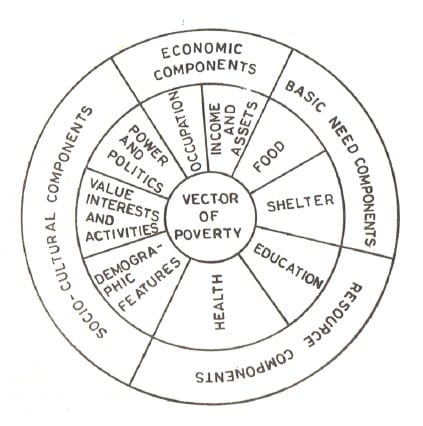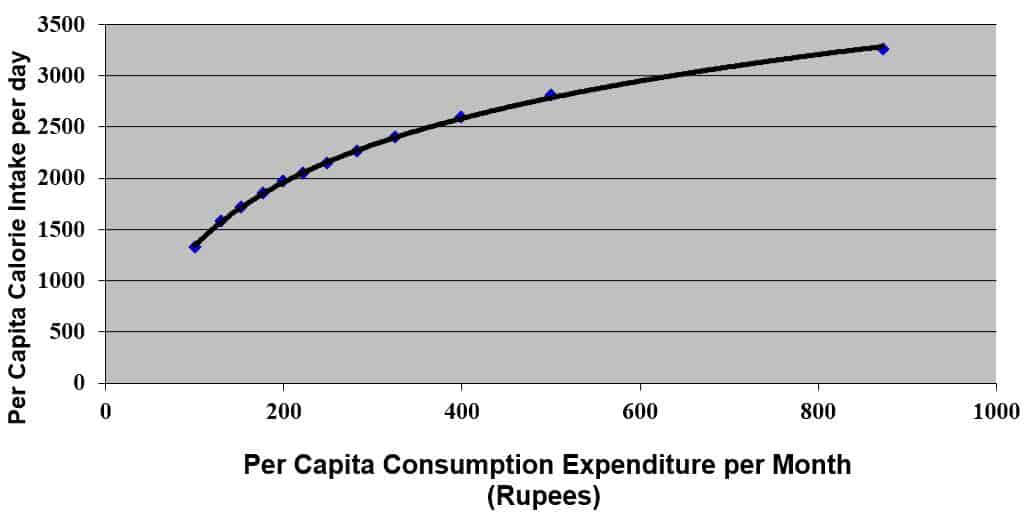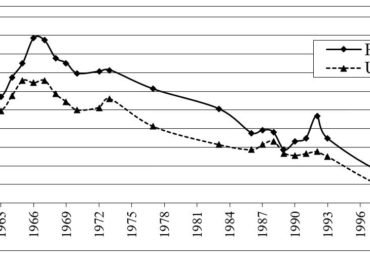Rural and urban population in India
India is second most populous country in the world and is also known to house over one – third of the world’s poor. Though India is witnessing a rapid urbanization still a very large proportion lives in rural areas. Agriculture and related activities in rural India contribute to 33% of the Gross Domestic Product, and is responsible for the employment of over 60% of the workforce.
New agricultural methods incorporating the use of genetically improved seeds, double cropping and expansion of farming land brought about national self-sufficiency in grain production. Constant innovations in farming techniques continue to increase unit output, but this remarkable success has not yet fully insulated the country from the impact of drought and declining water sources. Nor has the contribution of the rural sector to the nation’s economic prosperity brought about the desired improvement in the lives of the 300 million poor who mostly live in the villages.
Indian poverty is predominantly rural, where landless laborers and casual workers are the worst off economic group. Scheduled Castes and Tribes, women and female-headed families, old people, and female children face more deprivation than others. The rural poor are primarily those with limited ownership of assets— including land. The vast majority of the rural poor in India are engaged in agriculture (including fishery and livestock), either as agricultural wage laborers or marginal farmers.
There are several important characteristics of the rural poor. First, almost 42% of the rural poor fall into the most economically disadvantaged group of agricultural labour. Furthermore, more than half of this group consists of Scheduled Castes and Scheduled Tribes (SCs and STs). Overall, SCs and STs constitute about 25% of the rural population but account for more than 42% of the poor.
Also Read: Causes of Urban Poverty, Human Poverty Index
Definition:
Poverty is described as lack of the income needed to acquire the minimum necessities of life.
Poverty is multidimensional – Deprivation in income, illiteracy, malnutrition, mortality, morbidity, access to water and sanitation, vulnerability to economic shocks.
Rowntree was the first investigator to attempt a rigorous definition of poverty in subsistence terms. In his classic study of poverty in the city of New York. He writes “My primary poverty line represented the minimum sum on which physical efficiency could be maintained. It was a standard of bare subsistence rather than living.”
J. Murray stated, “The wants to be considered here are the recognised biological necessities Food and drink little will be said about housing.”
Orshansky has noted, “There is no generally acceptable standard of adequacy for essentials of living except food.”
Thus the term “Poverty” refers to “the state or condition of having little or no money, goods, or means of support.” or “to a condition of being in want of something that is needed, desired or generally recognized as having value.”
Components of Rural Poverty:
Rural poor are identified on the basis of following nine vectors of poverty.
1. Occupation:
- Occupation: To find out the kind of occupation the poor are engaged in and its tenure; reasons for choosing the way of entry to this occupation, occupational mobility; and the level of satisfaction with the work.
- Unemployment: To ascertain the extent of unemployment among educated and uneducated members and number of earners in the poors family.
2. Income and Assets:
- Income : To find out the income of the poor from all sources together with the flow of income in terms of constancy and irregularity as well as reasons assigned by them for their inadequate income.
- Land Holding: To ascertain the ownership of land and pattern of its distribution.
- Livestock: To know about animals kept or raised by the poor, reasons for up-keeping them, and monthly gains and expenses.
- Capital accumulation: To learn the poor’s savings and the sources through which they save.
- Indebtedness: To find out the extent of the poor’s indebtedness, purposes for which they raise loans, and mode of repayment.

3. Food Consumption: To find out types and quantity of food they consume; reasons for the kind of food they consume, and expenditure involved on the food consumption.
4. Health:
- Treatment: To learn the poor’s pattern of treatment including the kind of hospitals and medicines.
- Preventive measure: To know the preventive measures adopted by the poor to arrest the spread of diseases.
- Sanitation: To understand the sanitary conditions of their houses and localities.
- Visits and medical officials: To find out whether the localities where poor live are visited by the medical officials.
5. Shelter:
- Ownership of house and its nature: To ascertain the kind of house the poor own with special reference to the availability of rooms, the purpose for which rooms are used, and the number of persons live in them.
- Basic civic amenities: To know the provisions for windows and doors, drinking water, lavatory, and light facilities in the poor’s houses.
- Material Possession: To find out various household items in terms of furniture, means of entertainment, vehicles and utensils.
6. Education:
- Level of education: To find out the level of education of the respondents together with reasons for not getting further education, as well as the level and type of schooling of their children.
- Women’s education: To ascertain the poor’s views towards women’s education.
7. Demographic Features :
- The nature of the family: To find out nature of the poor’s family in terms of its size and their preferences for a specific type of family and attitude towards joint family; and the kind of familial relationship.
- Marital status: To understand the marital status of the respondents and their attitudes towards marriage.
- Divorce and widow remarriage: To find out the frequency of, and reasons for, divorce; agencies which affect divorce; and permissibility and practice of widow remarriage.
- Migration: To find out the place of origin; frequency of, and reasons for, migration; family members who migrated along with them; place of shelter just after immigration; nature of their stay in the city and reasons for choosing this city; and frequency of visit to the native place
8. Values, Interests and Activities:
- Religiosity: To find out the religiosity among the poor in terms of ritualistic, intellectual belief and good work dimensions.
- Class-prejudice: To find out the poor’s attitude towards the non-poor in terms of education, behaviour, intelligence and other facilities.
- Modern Orientations: To find out modern orientation of the poor in terms of their readiness to accept innovations and adaptation of scientific views in their life.
9. Power and Politics:
- Political affiliation: to find out the affiliation of the poor with political parties and their mode of political participation.
- Organizational participation: To find out the poor’s organizational participation in terms of labour union, and other associations, as well as their interest in national political affairs.
- Perception of government: To understand the poors perception of a good government.
- Perception of leader: To learn about poor’s perception of qualities of a leader and criteria for electing a leader of their choice.
Poverty Estimation: Poverty estimates are vital input to design, monitor and implement appropriate anti-poverty policies. Following are basis to estimate poverty:-
- Analysis of poverty profiles by regions, socio-economic groups.
- Determinants – factors affecting poverty.
- Relative effects of factors affecting poverty.
- Allocation of resources to different regions and to various poverty reduction programs.
Poverty Line: Two types- Absolute poverty line & Relative poverty line
- Relative Poverty Line defined in relative terms with reference to level of living of another person; or, in relation to an income distribution parameter.
- Absolute Poverty Line refers to a threshold income (consumption) level defined in absolute terms. Persons below a pre-defined threshold income are called poor.
Indian Poverty Line
A minimum level of living necessary for physical and social development of a person. Estimated as: total consumption expenditure level that meets energy (calorie) need of an average person.
PL comprises of both food and non-food components of consumption. Considers non-food expenditure actually incurred corresponding to this total expenditure. It is difficult to consider minimum non-food needs which is entirely on an objective basis.

Relation between calories intake and per capita expenditure
Official Poverty Line on India:
- Originally estimated for 1973-74: Rs 49 and 56 for rural and urban areas Updated using an appropriate price index (CPIAL for rural India, CPIIW for urban).
- A monthly per capita consumption expenditure of Rs. 356 and 539 for rural and urban areas respectively for 2004-05.
- More than a quarter of India’s population remain below PL in 2004-05.
28.3% Rural 25.7% Urban 27.5% Total
- Planning Commission of India has defined poverty line based on recommended nutritional requirements of 2400 calories/person/ day for rural areas & 2100 calories/ person/day for urban areas.
Poverty in India change over time

Up to mid-1970s – fluctuations with cycles
Since mid-1970s – continuous fall
Except a few years immediately after start of reforms (early 1990s)
Controversies around estimates for 1999-2000 (under estimates poverty)
Also Read: Benefits and advantages of Living in Cities